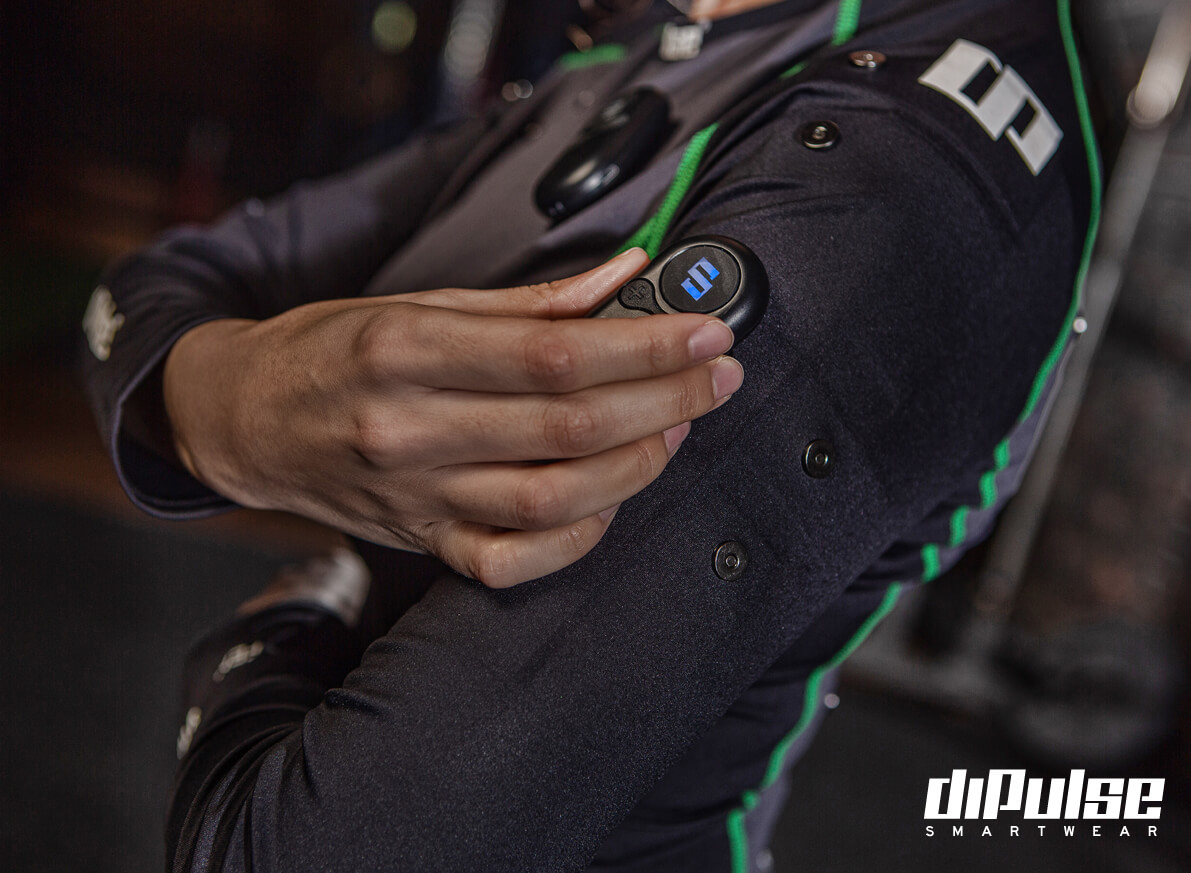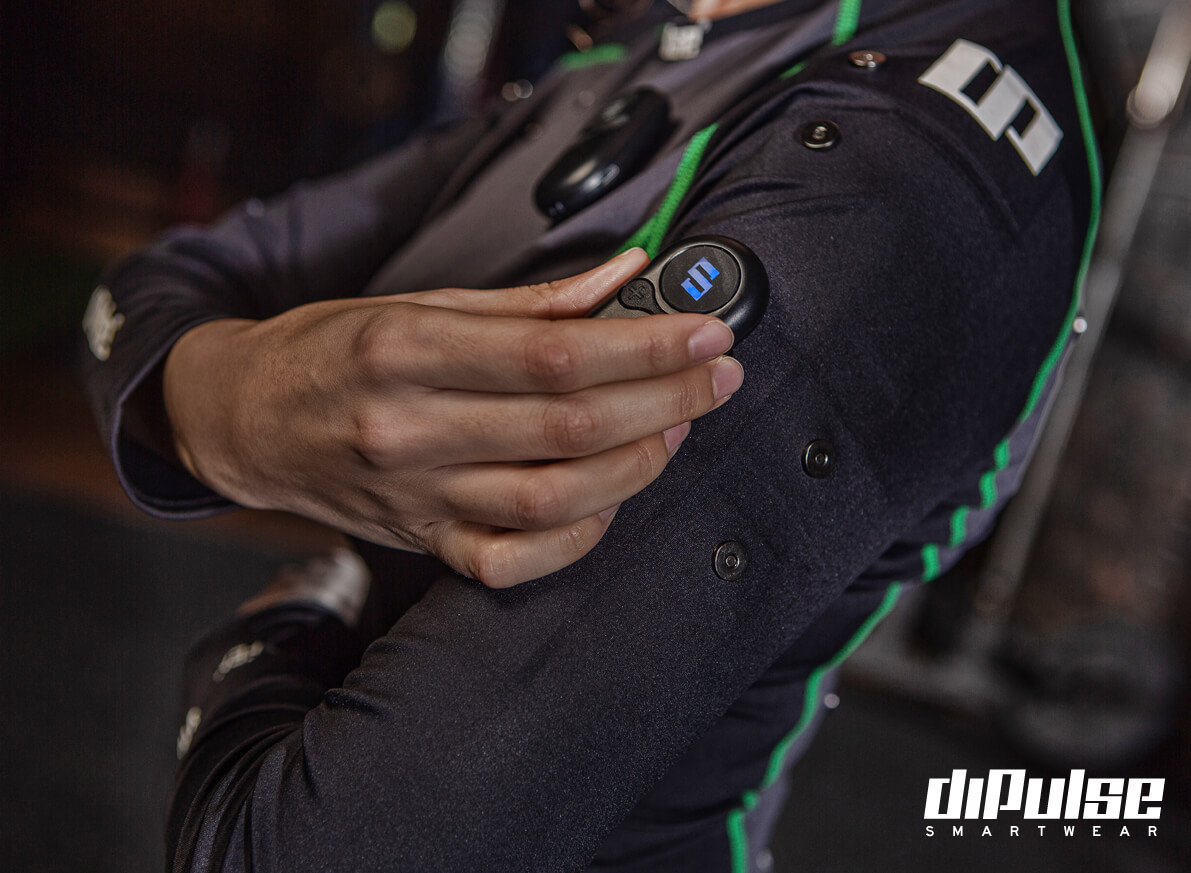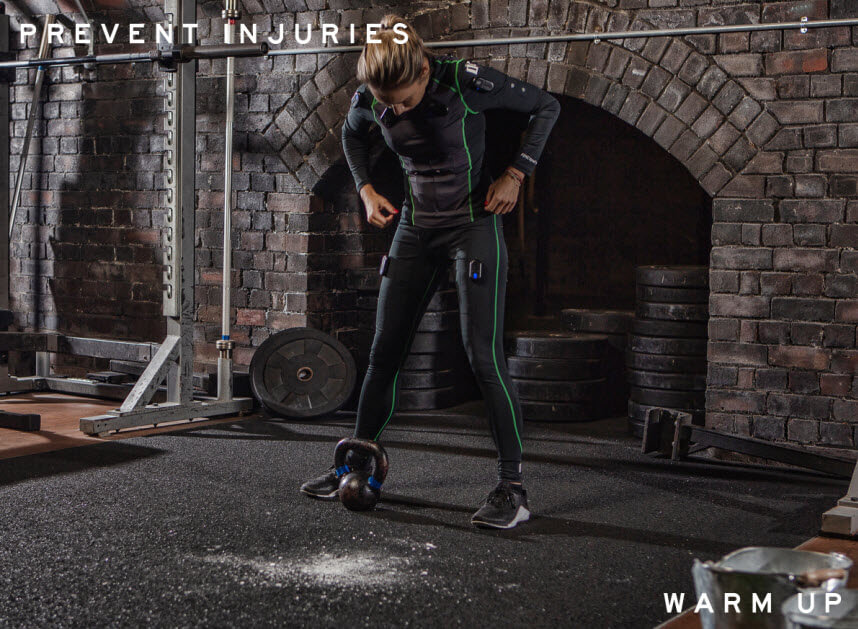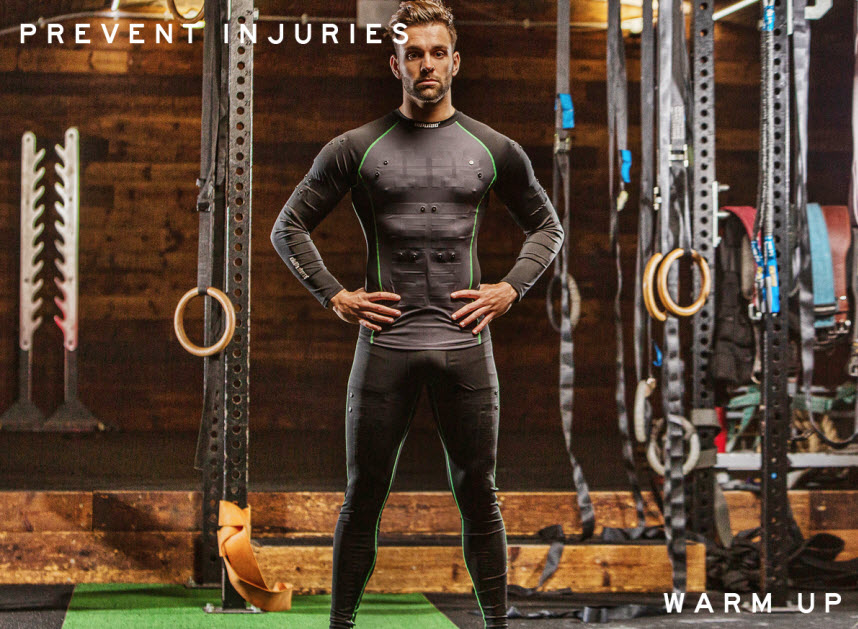
Richard Statham and Mathias Jepson from diPulse talk to Jessica Owen about the company’s expanded product range and ambition to enter the world of gaming.
Last year I met up with Richard Statham and Mathias Jepson in London’s Canary Wharf to try out the diPulse smart activewear kit. At the time, the company had just won the ISPO Brandnew Award for the Wearable category at ISPO Munich, and the company has since gone from strength to strength.
For those of you who need a reminder about diPulse, the company has designed a smart textile system to improve athletes’ performance. The kit looks like normal compression wear, but it features a dry carbon electrode system which is also referred to as a membrane, with integrated high-performance fabrics to provide consistent deep muscle NMES, heart rate monitoring and motion sensing.
Both the leggings and the top feel silky and thin with the stimulating membrane situated where the key muscle groups are, such as the abs or quads – these stimulating points are where the dry carbon membrane is rendered into the material. On the points where the membrane is positioned, there are popper-like magnets attached to them. Small modules that look like key fobs attach to these parts and within them, this is where the muscle stimulation, heart rate monitoring and motion sensing technology is hidden.
Back when I met the team in February 2019, the men’s kit was still being tweaked and a range of ancillaries had just been created. But now, the men’s kit and ancillaries are available to buy, and the women’s kit is planned for release later this year.
On top of that, diPulse is now expanding the range with even more kit to provide users with more options. Statham, who is the CEO and founder, says: “We are now releasing calf compression sleeves, a sports bra with heart rate monitoring, a sports bra with muscle stimulation in the chest and back with heart rate monitoring, a heart rate strap, shoulder support, and both men’s and women’s training shorts.
“Soon we will have a broad range of products that you can pick and choose from. For example, you could just have the calf compression sleeves for cycling. These are also cheaper than the full kit, so we have opened up opportunities for customers.”
In addition to the kit itself, the team has also been working on new features. For example, one element that has been added in the last six months is that diPulse’s training data is now synchronised by Google Fit and Apple Health. Additionally, the company has worked on its dashboard within the diPulse App to make it more useful to the user.
“Many fitness wearables track what you’ve achieved, and you can look at the dashboard and see the stats. But what’s the objective?” Statham asks. “Our new feature allows you to set the objective; the length of time you have available and the number of calories you want to burn, and it can advise you on how to achieve those targets. So, suddenly instead of hoping you hit targets, you actually train to achieve them.”
DiPulse is currently in a very good situation considering the ongoing Covid-19 pandemic. In a recent webinar hosted by the WFSGI and McKinsey & Company, the analysts mention that sales of home workout kit and equipment have soared because gyms have closed. People still want to keep fit and because these people have made an investment, it is likely that they won’t return to the gym quickly once the national lockdowns across the world have been lifted. With diPulse, users can workout at home and simulate heavy weights, so this company along with others such as Peloton can support individuals in achieving their goals during this challenging time.
“There is also a trend where everything is moving towards staying at home,” adds Jepson, the managing director of the company. “You buy something online, get it delivered to your door, watch movies on Netflix etc. Time is a valuable asset. It takes time to commute to the gym and so even that is moving towards being done at home.”
Now, a new piece of tech is being created to enable more muscle groups to be stimulated at any one time. This device links nicely into what diPulse is working towards next. Although the company started out in the sports and fitness sector, the kit has shown that it has many more promising applications – one of which is in the world of gaming, a multi-billion dollar industry.
“The sports and fitness sector was the starting point,” Statham explains. “But it’s very arduous to get it to a level of maturity because people find it hard to understand what we do and what it can offer. But with gaming, people get it immediately.”
The idea is that the diPulse kit and stimulation modules can replicate different situations. For example, this new tech could replicate a bullet going through the chest and leaving the body through the back. If a grenade hits you in a game, you could feel it resonate throughout the body. The elements could also be simulated as gentle vibrations could replicate rainfall pattering against the body.
“Have you ever seen Steven Spielberg’s Ready Player One film?” he says. “We can basically make that suit.”
Statham and Jepson explain that diPulse has been in talks with a global media provider about the possibility of entering the gaming sector; they have even tried on the kit and felt what it can do.
They say: “They tried the kit and understood its capabilities immediately. They even mentioned that it has applications in theme parks, movies, VR gaming, military training, police training and more. Because we can cover every spectrum and also include the medical side, the opportunities are endless.”
And if this wasn’t enough, diPulse is also in discussions with a number of other major players about developing smart shoes and other innovative offerings.
Additionally, the team will offer bespoke programmes downloadable via a new and far more advanced version of the current app (diPulse Pro) later this year. This means that specific programmes will be available for say CrossFit, yoga, gym etc, including total body workouts, mobility training, cardio specific programmes as well as Combined Muscle Training (CMT) standalone programmes or even CMT and cardio combined training.
Given that diPulse has only been operating for two years, the company is really making headway. From here, the team is focusing on the final development of its new features and kit so it can be released, and continuing discussions to launch the kit into the gaming sphere.
Statham says: “We have our finger on the pulse and we’re sitting in the sweet spot.”
For more information about diPulse, visit https://www.dipulse.com/
Have your say. Tweet and follow us @WTiNcomment







